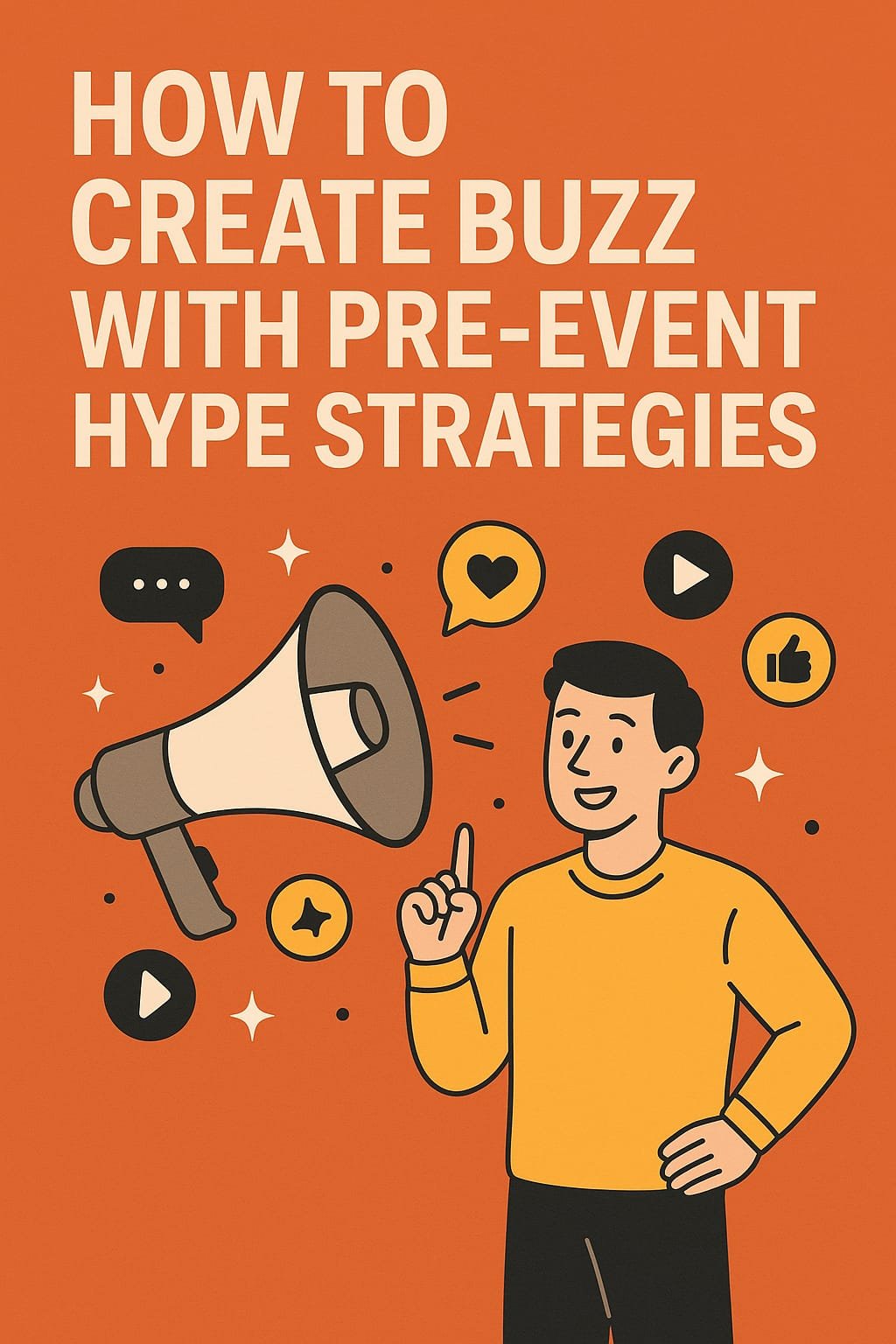
Creating anticipation isn’t just about promotion it’s about building emotional investment. When people feel connected and excited beforehand, they are more likely to attend, engage, share, and remember.
Benefits of a strong pre-event hype campaign:
- Increased attendance and RSVPs
- Higher engagement on digital platforms
- Elevated brand positioning and visibility
- Enhanced media interest and press coverage
- A stronger emotional connection to your brand
Best Pre-Event Hype Strategies to Implement
1. Teaser Campaigns with Countdown Mechanics
Use social media, email, and websites to release sneak peeks, teasers, or behind-the-scenes content. A countdown timer can add a psychological trigger for urgency.
Tactics to try:
- Mystery speaker reveals
- Visual countdowns on Instagram Stories
- Cryptic teaser videos
2. Collaborate with Influencers & Partners
Team up with industry influencers, past attendees, or keynote speakers to co-create content and build credibility.
Why it works:
Their audiences trust them, and their excitement can translate into real interest and reach.
3. Leverage User-Generated Content (UGC)
Encourage followers or past attendees to share what they’re excited about, using a branded hashtag.
Tips:
- Run a pre-event photo or story contest
- Highlight top posts on your official pages
- Create a hashtag wall as a pre-event feed
4. Create FOMO Through Limited Access
Nothing generates hype like the fear of missing out. Offer limited early bird tickets, VIP access, or exclusive experiences to amplify urgency.
Sample Tactics:
- “First 100 signups get backstage access!”
- “Early bird closes in 48 hours – don’t miss out!”
5. Pre-Event Engagement via Email and Retargeting
Automated email drip campaigns and retargeting ads keep your event top-of-mind. Personalize the messaging based on audience behavior and registration status.
Don’t forget:
- Segmented emails for early registrants
- Reminders with value-driven headlines
- Countdown banners in email footers
6. Launch Interactive Experiences Before the Event
Virtual meetups, quizzes, or AR filters can increase engagement while providing shareable moments.
Ideas:
- Interactive poll: “Guess our surprise guest”
- Online networking lounges
- Shareable “I’m attending” badges or reels
Timeline for Executing a Pre-Event Hype Strategy
| Time Before Event | Action Item |
|---|---|
| 6–8 weeks | Announce the event and open registrations |
| 5 weeks | Start teaser campaigns and influencer outreach |
| 4 weeks | Launch limited offers or early bird access |
| 3 weeks | Begin social media countdown and email sequences |
| 2 weeks | Publish UGC campaigns and virtual pre-events |
| 1 week | Release behind-the-scenes content and speaker highlights |
| Final 72 hours | Use high-frequency reminder emails and retargeting |
Facts
The modern event journey starts long before your guests step into the venue. An effective pre-event hype strategy sets the tone for an unforgettable experience. By integrating digital tools, emotional storytelling, influencer marketing, and strategic timing, brands can generate buzz that not only fills seats but also builds long-term loyalty.
Start your hype campaign at least 6–8 weeks before the event to build momentum and allow time for word-of-mouth marketing.
Instagram, LinkedIn (for B2B), email marketing platforms, and your event landing page are the most effective tools for hype campaigns.
Absolutely. B2B influencers, thought leaders, and keynote speakers are valuable assets for professional event promotions.
Track registration rates, email open/click rates, social media engagement, hashtag usage, and web traffic using UTM links and analytics tools.
Avoid generic messaging, spammy promotion, or last-minute announcements. Always ensure your strategy aligns with your audience’s interests and brand tone.